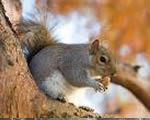 Go to main content
Go to main content
Archive Website of the UK government
Please note that this website has a UK government accesskeys system.
Main menu
Page menu
Environment and greener living

Controlling non-native wildlife

Plants and animals brought into the UK from abroad can cause great damage to native wildlife. Find out how you can help stop the spread of harmful species, and understand the laws on bringing plants and animals into the UK.
Why is non-native wildlife a threat?
Animals or plants have been brought to this country for hundreds of years. Most of them are not a problem. However some plants and animals spread more aggressively, and can threaten native wildlife through competition, disease or by preying on them.
This can upset the balance of wildlife in this country. In extreme cases this could lead to some UK species disappearing for good.
Non-native plants and animals can cause financial harm to industries like forestry, agriculture and fisheries, and structural damage to buildings and roads. Floating pennywort, for example, grows very quickly and can cause damage to other plants and animals. Japanese knotweed can even grow through hard road surfaces, and once established is difficult and expensive to remove.
Examples of problem non-native wildlife
Being able to identify non-native wildlife could help you to stop the spread.
Floating pennywort
This is also called ‘water pennywort’ or sometimes just ‘pennywort’. It has shiny, kidney-shaped leaves with crinkled edges and is usually found floating on still or slow-moving fresh water. Floating pennywort can grow up to 20 centimetres a day, blocking out light and reducing the oxygen for other plants and animals.
Japanese knotweed
Japanese knotweed is a fast-growing weed that appears to have no natural enemies in Britain. It spreads quickly and can damage property (for example by growing through tarmac or even the floors of houses). A fragment of root as small as 0.8 grams can grow to form a new plant.
American bullfrog
The American bullfrog eats almost any other species, and carries a disease that has wiped out many other frog and toad populations. It breeds rapidly, with each female laying up to 30,000 eggs at a time.
Grey squirrel
The grey squirrel has spread widely, with a population now estimated at over 2 million. They cause damage to woodland, and are largely responsible for the falling numbers of red squirrels in England. They are stronger and more adaptable than the red squirrel and they carry the Squirrelpox virus, which is lethal to red squirrels.
A list of some of the key non-native species, descriptions and photographs can be found on the Non-Native Species website.
You can find more advice on dealing with invasive plants and harmful weeds in the 'Home and community' section.
How do non-native species arrive here?
Some non-native animals and plants are brought to this country deliberately. Sometimes they enter the country by accident - insects, small animals, seeds, and plant fragments can be carried on luggage or as stowaways in cargos of internationally transported goods.
There are restrictions on the type and amount of plants that you can bring back from abroad. More details of these limits can be found in the leaflet 'If in doubt, leave it out'.
How you can prevent the spread of non-native species
There are steps you can take to prevent non-native plants and animals spreading out of control.
Garden plants
When you are buying plants or seeds, or composting garden material, there are some precautions you can take to stop non-native species spreading:
- try to use plants that are native to the UK
- always dispose of plant material or garden waste responsibly - don’t dump it in the wild
- be careful with the plants you share with friends or move around
You can find out about controlling non-native plants on the Department for Environment, Food and Rural Affairs (Defra) website.
Pond plants
Pond and water plants can cause major problems when they get into lakes and rivers. It costs more than £3 million each year to control just three kinds of aquatic plants in Britain. Find out how to stop the spread of non-native aquatic plants on the ‘Be plant wise’ page.
Animals
There are many restrictions on bringing animals into the UK, and you will need a licence to bring in most non-native animals. The animal import laws help to protect crops and native wildlife, prevent diseases like rabies, and to stop the trade in endangered species.
Some animals are not allowed into the UK because of the danger to native wildlife. Other animals will need to be checked for disease before they can enter.
For more information on bringing plants and animals to the UK, download the leaflet on importing non-native plants and animals from the Natural England website.
Releasing non-native animals into the wild
If you do import or keep an animal that is not native to the UK you must take care that it does not escape. You are responsible for the animal’s welfare, and for making sure it is kept safely and securely.
If your animal does escape, or you release it into the wild, you can be prosecuted under the Wildlife and Countryside Act 1981.
In some cases you can get a licence to release non-native animals into the wild. For more information on licences to release non-native wildlife visit the Natural England website.
 Facebook
Facebook Twitter
Twitter StumbleUpon
StumbleUpon Delicious
Delicious Reddit
Reddit
